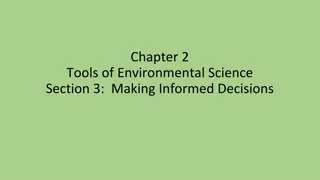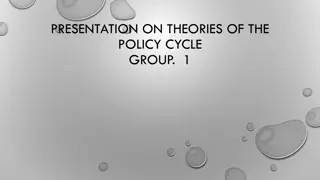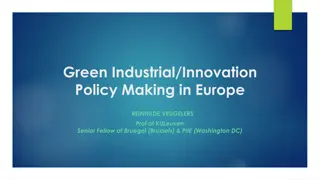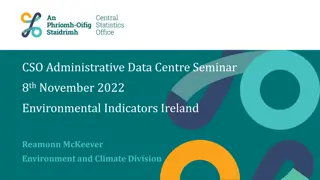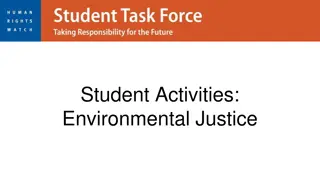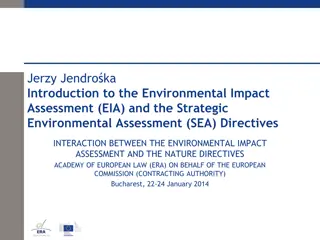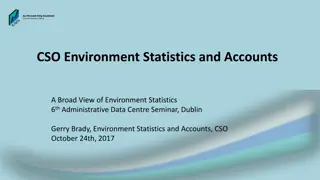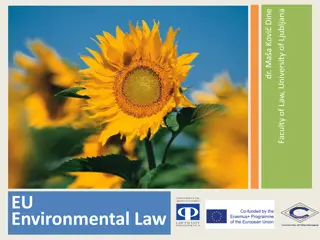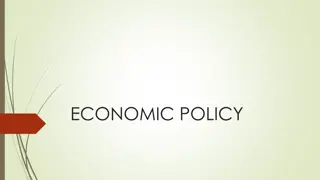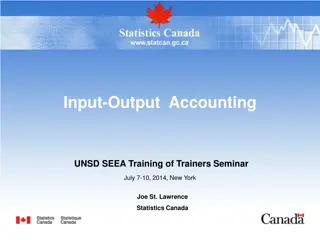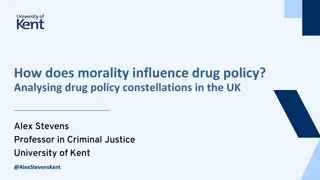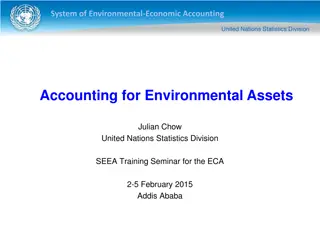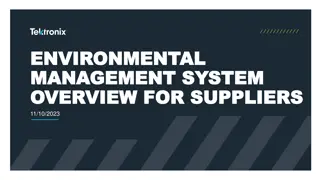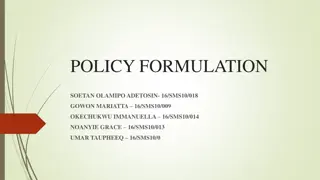Environmental Policy and Economic Implications
Exploring the intersection of environmental policy, economics, and ethics, this overview discusses economic incentives, cost-benefit analysis, and the concept of the Laffer Curve as they relate to government revenue and pollution mitigation. It emphasizes the delicate balance policymakers face in addressing environmental costs while promoting economic development. The analysis showcases the complexities of decision-making and trade-offs that play a crucial role in shaping effective environmental policies.
Download Presentation

Please find below an Image/Link to download the presentation.
The content on the website is provided AS IS for your information and personal use only. It may not be sold, licensed, or shared on other websites without obtaining consent from the author.If you encounter any issues during the download, it is possible that the publisher has removed the file from their server.
You are allowed to download the files provided on this website for personal or commercial use, subject to the condition that they are used lawfully. All files are the property of their respective owners.
The content on the website is provided AS IS for your information and personal use only. It may not be sold, licensed, or shared on other websites without obtaining consent from the author.
E N D
Presentation Transcript
Science Economics Ethics
Cost-benefit analysis of environmental policy How do you address the environmental costs of economic development? How do you weigh the trade-offs? Where do you draw the line?
Somewhat related: The Laffer Curve indicates the ideal tax rate How does a 100% tax rate generate less government revenue?
To clarify: The dotted line does not indicate a tax of 50%! It just means that the ideal is between the two extremes.
Policymakers favoring higher taxes are likely to believe the curve skews right of the ideal.
Policymakers favoring lower taxes are likely to believe the curve skews left of the ideal.
Similarly to the Laffer Curve, ideal pollution mitigation is also located somewhere between the extremes. How does zerotolerance for pollution result in such a high cost to society?
Not in textbook: Cost-benefit analysis At this point, the cost of pollution exceeds the cost of abatement More needs to be done to curb the damage from the pollution
Not in textbook: Cost-benefit analysis At this point, the cost of abatement exceeds the cost of pollution The measures for curbing the pollution are hurting the economy
Not in textbook: Cost-benefit analysis This point is optimal because it results in the lowest cost to society This strikes a balance between environmental and economic costs
The Kuznet Curve shows how the environment improves as wealth increases:
Keep in mind the law of unintended consequences! Does the policy actually do good? Or does the policy just feel good? The results do not care about your feelings or even your intentions!









